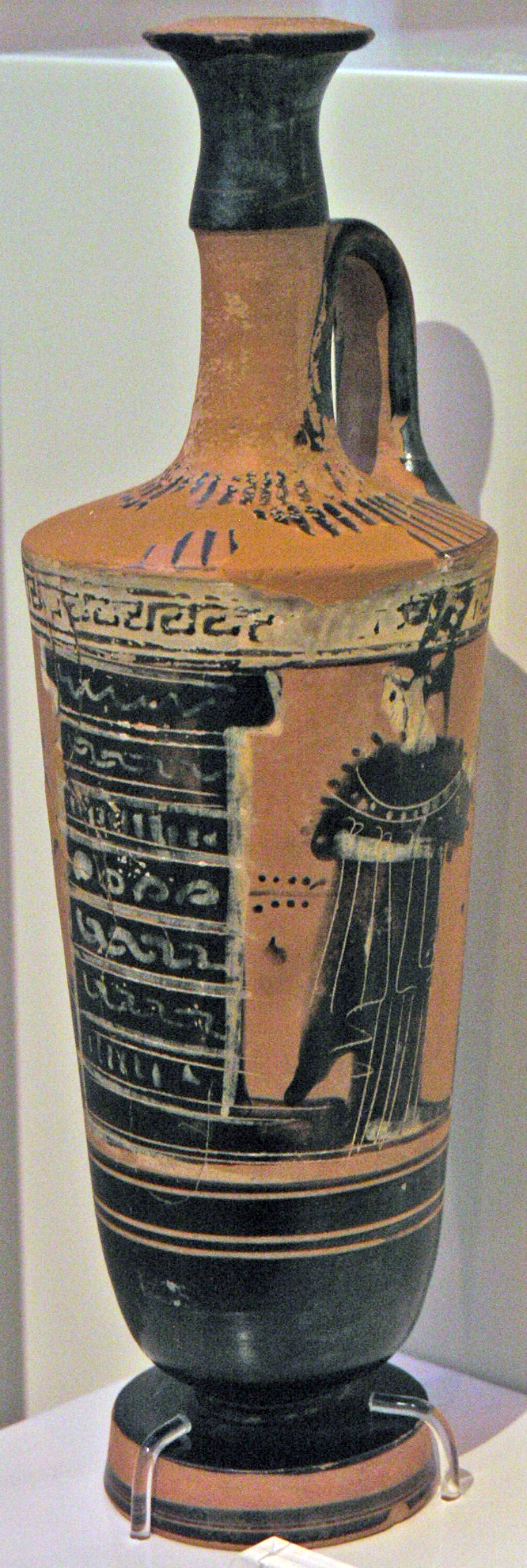Beldam Painter on:
[Wikipedia]
[Google]
[Amazon]
 The Beldam Painter was an Attic
The Beldam Painter was an Attic
black-figure
Black-figure pottery painting, also known as the black-figure style or black-figure ceramic ( grc, , }), is one of the styles of painting on antique Greek vases. It was especially common between the 7th and 5th centuries BCE, although there are ...
vase painter, active from around 470 to before 450 BC.
His real name is unknown. The conventional name is derived from his name vase
In classical archaeology, a name vase is a specific "vase"In the study of ancient Greek pottery a "vase" is a general term covering all pottery shapes. whose painter's name is unknown but whose workshop style has been identified. The painter is co ...
, which depicts an unidentified older female being tortured by several satyr
In Greek mythology, a satyr ( grc-gre, σάτυρος, sátyros, ), also known as a silenus or ''silenos'' ( grc-gre, σειληνός ), is a male nature spirit with ears and a tail resembling those of a horse, as well as a permanent, exa ...
s. He was one of the latest representatives of his style. The products of his workshop are considered the final evidence for large-scale production of black-figure vases in Athens
Athens ( ; el, Αθήνα, Athína ; grc, Ἀθῆναι, Athênai (pl.) ) is both the capital and largest city of Greece. With a population close to four million, it is also the seventh largest city in the European Union. Athens dominates ...
. Stylistically, his work is closely connected to that of the Haimon Group.
He continued the tradition of small narrow '' lekythoi''. The smallest have chimney-like mouths, sharply carinated shoulders and high, simple feet. Already early in his career, he produced high-quality drawings, especially on larger ''lekythoi'', considered better than those by the Haimon Group. A striking characteristic of his work are garlands of ivy used as a decorative motif on the necks of many of his ''lekythoi''. Sometimes they are simple outlines, often on the same vessels as funeral scenes. These grave ''lekythoi'' are the first of their type in Athens, where they were produced in large numbers from then onwards. Especially typical of his and his workshop's creations is the use of white ground under the ornamental friezes, and more generally, the generous use of white paint. Another characteristic of the artist's work are plant and checkerboard patterns on white ground, subsequently copied by other workshops. His ''palmette
The palmette is a motif in decorative art which, in its most characteristic expression, resembles the fan-shaped leaves of a palm tree. It has a far-reaching history, originating in ancient Egypt with a subsequent development through the art o ...
-lekythoi'' resemble the works of the Class of Athens 581.
See also
*List of Greek vase painters
A ''list'' is any set of items in a row. List or lists may also refer to:
People
* List (surname)
Organizations
* List College, an undergraduate division of the Jewish Theological Seminary of America
* SC Germania List, German rugby uni ...
References
Bibliography
* C. H. Emilie Haspels: ''Attic black-figured lekythoi'', Paris 1936, p. 170-191. 266-269. 367. * John Boardman: ''Schwarzfigurige Vasen aus Athen. Ein Handbuch'', Mainz 1977, , p. 162. {{Authority control Ancient Greek vase painters Artists of ancient Attica 5th-century BC Greek people Anonymous artists of antiquity Year of birth unknown